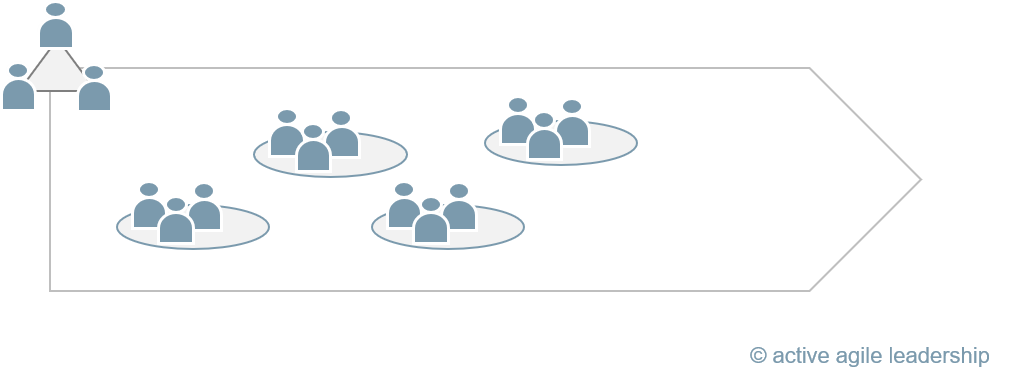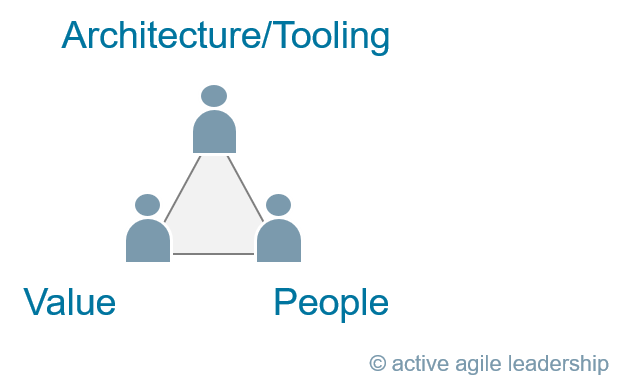6. Triad leadership

Why it matters
How do you make sure you lay the tracks just in time for the train?
During periods of growth, one of the following scenarios is likely to happen:
- You deliver business value, but burned your people out
- You deliver business value, but built technical debt
- You deliver a splendid technical solution, with bells and whistles that no one cares about.
- You build a warm and friendly organization, which is great, but have no product or services to show for (and when you ask, you get mostly excuses, really)
Triad leadership is a leadership pattern that makes sure that Value delivery, Fit-for-purpose Architecture and the Agile Organization improve at the same pace.
How it works

A leadership triad
This is a leadership pattern for a unit that ensures that we balance business growth, technical system capabilities and people over time.

The leadership triad consists of three roles:
- Value responsibility
- Architecture & tooling responsibility
- People & Growth responsibility
The roles are held by different people to create a balance of power between the three forces over time.
The rationale behind the pattern is simple, the direction and tradeoffs over the Business, Architecture and People have to be aligned. If not, improvement will not happen fast enough across all three areas.
The Value lead has the value/cost responsibility and the mandate to balance value/risk. He has the final say on the prioritization of the backlog for the unit the triad heads. Since this role balances value/risk, he has the final say if the triad disagrees.
The Architect’s responsibility is to craft a fit-for-purpose system architecture and the tooling that makes work smooth. The Architect advises on technical trends and on the opportunities that drive competitive edge.
The People Lead is responsible for building competence, teams and the spirit needed to achieve the value stream mission. The people manager is responsible for making sure that continuous improvement is happening.
Together, the leadership triad has a shared responsibility for the value streams mission and for deliverables.
Shared responsibility with distinct roles
Each role in the triad brings a unique capability to the table. By clarifying this, you get role clarity and the triad members know what to expect from each other (“this is what each person brings to the table”).
The fact that the triad members have shared responsibility doesn’t mean that their roles are not distinct.
While there are other leadership patterns of course, the argument for the leadership triad pattern is this: Each role can in essence undermine the effort of the other two. To avoid this and to make sure they keep a shared direction, put them all in the same boat.
Inject a “change muscle”
The last argument for opting for a leadership triad has to do with your expected rate of change. How often will the team organization be restructured? How fast do people need to grow? Driving change takes energy, and where is the muscle going to come from that makes this happen? If you are spread too thin and can barely keep your chin above water delivering, then where is the drive to deal with change going to come from?
The triad pattern intentionally inserts bandwidth into the leadership team to drive change and improvement in both architecture and organization.
When not to use the Triad pattern
If your rate of change is low, if the rate of expected growth is slow, or if the unit is very small, then consider other alternatives.